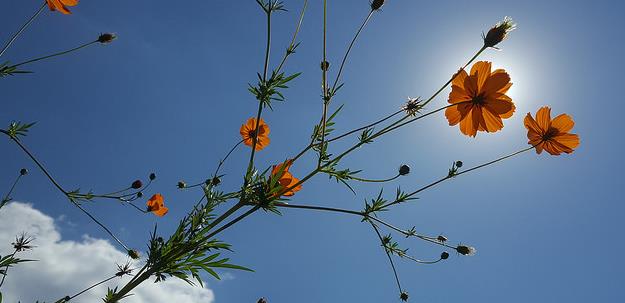Wild pollination on the decline; pollination zones may be the solution
by September 18, 2017 4:50 pm 556 views

Wild pollination has been in sharp decline in recent years and there is a movement to create “wild pollination zones” on the periphery of farms, said Dirk Philipp, associate professor of animal science for the University of Arkansas System Division of Agriculture.
“The original prairies that covered much of the U.S., including parts of Arkansas, were species-rich,” Philipp said. “Those species include many animals — bees, flies, butterflies, moths, beetles and other insects, as well as some birds, lizards and mammals — that move pollen in and among plants,” he said. “Those pollinators helped propagate abundant diversity of wild and cultivated plant species.”
The United Nations released a report last year that showed up to 40% of pollinators world-wide are in danger of extinction. Bees and butterflies top the list of endangered pollinators. Honey bees populations have declined 23% in the U.S. Since 2008 and in 2013, scientists recorded the lowest number of Monarch butterflies ever. About 75% of the world’s food supply is dependent on wild pollination.
Farm fields and pastures today contain food and forage plants. Typically, those plants do not provide a good habitat for pollinator species, Philipp said. Most perennial grasses and herbaceous flowering plants that make good habitat for pollinators would be considered weeds in a pasture.
Pastures don’t rely heavily on pollinators, but they can make ideal places to locate plots of pollinator-friendly plants. Such habitats can encourage biodiversity that offer benefits to the environment, wildlife, and neighboring gardens and farms that may rely on pollinators for abundant production. Although many pollinator-friendly plants are undesirable in pastures, where pesticide use is limited, many areas around the farm may be suitable.
Edges of fields, fallow or unproductive areas, wet lands and stream banks — including intermittent stream banks — and unused areas around farm buildings could make good sites for pollinator plots, he said. Deliberately planting habitat grasses and flowers for pollinators can provide other benefits. These plants can suppress weed growth and halt spreading into pastures from peripheral areas. Pollinator plots can be selected to complement existing habitats, such as ditches, fence rows and levees that offer nesting and foraging sites for pollinators.
“Leaving all or some of these areas alone can provide refuge for pollinators,” Philipp said. “Hedgerows and longer sections or patches of pollinator habitat will provide corridors for pollinator travel.”
Philipp also said some forage crops, such as clovers and alfalfa, could offer pollinator habitat or feeding grounds, though they normally are grazed or harvested before flowering. He suggests that small areas of some of these forages might be set aside and allowed to bloom.
Habitat and feeding grounds should not be farther apart than half a mile, Philipp said. “Ideally, only a few hundred yards should be between feeding and nesting sites for smaller native bee species,” he said.
Planting and maintaining a multitude of smaller pollinator plots around the farm helps keep those areas within reach of the insects. Pollinator habitats of wildflowers can help beautify farms and make landscapes more attractive.
